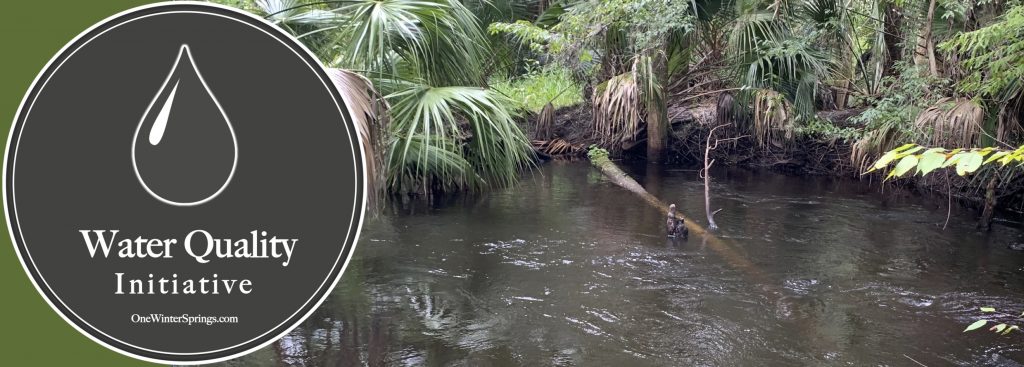
By Jesse Phillips, Founder Winter Springs Water Quality Initiative
As the founder of the Winter Springs Water Quality Initiative, a group that has been at the forefront of advocating for water quality in our city since 2019, I am deeply concerned about recent revelations regarding the presence of 1,4-dioxane in nearby Lake Mary and Sanford, as well as unincorporated Seminole County. After carefully analyzing the data and historical issues, I have gleaned several crucial takeaways:
1. Localized environmental contaminants impact drinking water quality:
Central Florida relies heavily on the aquifer as its primary source of drinking water, making it essential to safeguard the environment from contaminants. In Winter Springs, some public officials have claimed that failures in our wastewater system do not affect our drinking water – an argument that conveniently absolves the city despite numerous illegal spills of wastewater into the environment. However, our analysis indicates test results show such discharges led to increased levels of fecal coliform in our irrigation lines, exceeding legal limits and correlating with bacterial coliform in our drinking water which surpassed EPA standards. This reality highlights that pollutants we release into the ground find their way back into our water supply. Politicians cannot deny this fact, and it appears a similar situation was occurring with the plants in and around Lake Mary.
2. Data transparency is crucial for informed decision-making:
The presence of 1,4-dioxane is just one of tens of thousands of unregulated compounds that local governments are not required to include in annual drinking water reports. This staggering number underscores the need for ongoing scientific advancements in detecting and treating potentially harmful chemicals in our water supply. Comparable to the era when early automobile technology lacked proper safety regulations, we might unknowingly be polluting ourselves in ways we have yet to comprehend.
To promote transparency in the testing process, our Winter Springs Water Quality Initiative was founded with a simple goal: to make publicly available data accessible to all. Although much of this information is in the public domain, navigating various government databases can be challenging for the average citizen. To bridge this gap, we publish the reports released by the DEP, St. Johns Water Management District, and city government on our website in a user-friendly, chronological format. Our hope is that increased public engagement with available data will lead to better understanding and awareness of water quality issues. Residents in nearby areas should consider forming associations to do the same.
3. Assessing health risks requires careful consideration of data:
The Florida Department of Health conducted an analysis in 2016 to evaluate the health impact of 1,4-dioxane in and around the Lake Mary area. The highest level of 1,4-dioxane detected was 1.3 µg/L. Using a scientific method to determine recommended daily water consumption, they ran statistical models based on individuals consuming the highest detected level of the contaminant from birth until the age of 33.
The findings indicated that consuming water contaminated at the highest levels from birth to 33 years of age would result in a risk factor of 3 in one million. It is important to note that one out of every three Americans will be diagnosed with cancer at some point in their lives, meaning if one million people drank the contaminated water from birth until 33-years old, the number of cancer diagnoses would be expected to increase from 333,333 to 333,336. Considering Lake Mary’s population of roughly 16,600, if every Lake Mary resident drank the highest detected levels of the contaminant from birth to 33 years old, the statistical model predicts approximately 0.0498 additional cases of cancer diagnoses in that population. Expressed in percentage terms, there is roughly a 0.0498-in-16,600 chance (or 0.0003%) of a Lake Mary resident contracting cancer by drinking water contaminated at the highest levels from birth until the age of 33.
However, it is crucial to recognize that models like these are based on projections and may not perfectly reflect real-life situations. There likely wasn’t a continuous 33-year period during which the contaminant persisted at this exact level or higher. As an advocate deeply committed to water quality, I encourage residents to remain vigilant on this issue. Collaboration and informed discourse are essential as we strive to comprehensively address water quality issues and protect the health of our communities.
In conclusion, the recent Sanford/Lake Mary Water Reports underscore the critical importance of safeguarding our environment, promoting data transparency, and making informed decisions based on thorough assessments. By working together and acknowledging the significance of these issues, we can forge a path towards cleaner and safer water for our communities.